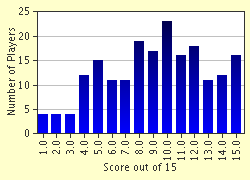Quiz Answer Key and Fun Facts
1. In 1917 Lenin appointed Feliks Dzerzhinsky as Commisar for a new secret police. By what name do we know this "All-Russian Extraordinary Commission for Combating Counter-Revolution and Sabotage"?
2. Which of the following Soviet spies posed as a Nazi journalist in Japan and warned Moscow of Operation Barbarossa and the attack on Pearl Harbor?
3. The People's Commissariat for Internal Affairs (NKVD) was one of Stalin's chief instruments in instigating his purges. In 1938 the NKVD itself was purged and its head, Nikolay Yezhov was executed and replaced by his deputy. Who was the deputy?
4. Which of the following Soviet leaders also served as head of the KGB?
5. Which of the following is an American company founded in 1924 by the Soviet Union to handle Soviet-American trade?
6. Which of the following physicists who worked at Los Alamos on the Manhattan Project was a Soviet spy?
7. Which of the following British traitors was stripped of his knighthood late in life when he was revealed to have been a spy for the Soviets?
8. Which of the following Americans, who were arrested for spying in the 1980s, was part of a spy ring that included three members of his or her family?
9. The book and movie "The Falcon and the Snowman" was about which of the following people?
10. Which of the following people, with the help of his wife, Maria del Rosario Casas Dupuy, sold the Soviets the names of every U.S. agent working in the USSR and received over US$2.7 million, the most money ever paid by the Russians for spying?
11. The Soviet military counterintelligence organization Smersh was an abbreviation for Smert shpionam, a slogan meaning:
12. The KGB was dissolved in 1991 and replaced with which of the following?
13. One of the KGB's methods of gathering intelligence was sexual situations used to coerce. Which of the following was a term for this practice?
14. Although the KGB was by far the most dominant intelligence agency in the USSR of the late Soviet period, there were separate agencies. Which one of the following was the the most notable of these agencies and primarily dealt with military intelligence?
15. In 1992 a former chief archivist of the KGB's foreign intelligence section smuggled materials out of Russia that served as the basis for a book by Christopher Andrew. Who was it?
Source: Author
ironikinit
This quiz was reviewed by FunTrivia editor
Beatka before going online.
Any errors found in FunTrivia content are routinely corrected through our feedback system.


